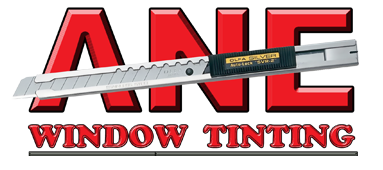Having the vehicles with the windows tinted is often preferable among drivers. It helps shield the bright sun’s rays and offers a little privacy. When it comes to window tinting, you want to ensure that the tinting is done efficiently by a reputable professional. Not only do you want to make sure the window tinting is done correctly, but it is essential it is done with the West Virginia window tinting law that was enacted in 1991. Today, we at ANE Window Tinting would like to share these window tinting laws.
West Virginia Window Tint Laws
Below is the latest information regarding window tinting laws in West Virginia. However, it is in your better interest to ensure the information is accurate and up to date concerning the tinting laws. The local authority for current West Virginia window tinting law enforcement policies, including rules and regulations in your area can be readily available. The professionals of ANE Window Tinting can offer assistance regarding the window tinting laws.
Visible Light Transmission Meter
The following darkness for auto window is the general guidelines for the West Virginia window tinting laws. The VLT % – Visible Light Transmission percentage is how the darkness of the tint is measured. This percentage refers to percentage of visible light allowed to pass through the combination of film and the factory tint of the window in accordance to the West Virginia window tint law. The smaller the number, the darker the film will be. Below is the allowable window tinting reflecting the West Virginia window tint law. Cars, trucks, as well as vans, SUVs, and other MPV (Multi Passenger Vehicles) are as follows:
– Windshield: On the top 5 inches of the windshield, a non-reflective tint is allowed.
– Front Side Windows: More than a total of 35% of light needs be allowed.
– Back Side Windows: More than a total of 35% of light is required. MPVs permit any light transmission.
– Rear Windows: A total of more than 35% of light must be allowed. Any light transmission is allowed on MPVs.
How Reflective Can Auto Tint be in West Virginia
The West Virginia window tint law outlines the the volume of how reflective the auto tint can be. To help reflect incoming light and reject the glare and heat generated by visible light, the tinting film can contain metallic elements; like the silver mirror-look for example. They are as follows:
– Front Side Windows: Cannot exceed a total of 20% reflective.
– Back Side Windows: It is not to exceed a total of 20% reflective.
Additional Window Tinting Rules & Regulations in West Virginia
1) Color Restrictions. The state law does not allow Red, Amber, and Yellow tint colors.
2) Side Mirrors. If the back window is tinted, dual side mirrors are required.
3) Certificate Requirements. In West Virginia, manufacturers of film need to certify the film they sell. You can double check with the dealer if the film is certified.
4) Requirements for Stickers. Between the film and glass on each tinted car window, the sticker to identify legal tinting is required.
5) Medical Exemption. For special window tinting Virginia window tint law allows medical exemptions. Consulting with the state law for more details is best for your individual needs.
Auto Window Tinting & More in Martinsburg, WV, Round Hill, VA, Gaithersburg, Maryland, Greater Eastern Panhandle Areas including Berkeley & Jefferson Counties, West Virginia
When you need your auto windows tinted, call ANE Window Tinting and let us ensure your window tinting is done correctly and within the locals laws and regulations.




